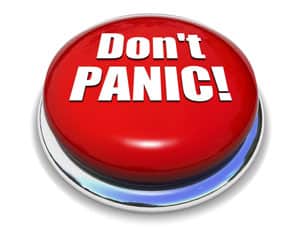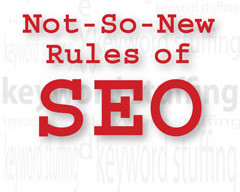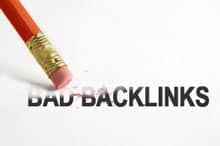The sky is falling! Google wants to force everyone to buy PPC ads!
Remove ALL links to your site and stop using any keywords at all!
Oh, how I wish I had a HTML tag to indicate sarcasm…
The panic over Penguins and Pandas is spreading like wildfire – and it is getting pretty irrational. Losing much of your website’s traffic is scary to say the least. If you have not had a problem with your search engine positions since the recent updates, please try to stay rational. The sky is not falling.
Legitimate SEO is not banned by Google or “dead” in any way.
Creating a website that is easily navigated and understood by people and search engines, and has quality content which is promoted effectively and sensibly throughout the internet will not get you banned from Google.
In case you didn’t know, what I just described is what real SEO is – NOT all the silly tricks and schemes that people have been doing to game the system and manipulate the search results. That is “webspam” – the stuff Google’s penguins and pandas don’t like.
But please don’t take my snarky comments and arrogance to mean that I don’t sympathize.
Everyone makes mistakes. Sometimes it is just because you didn’t know better. That is very likely since many of the so-called SEO experts out there are either clueless or flat-out lying to you.
If you have seen your website’s position in the search engine results drop since April 24th, take a deep breath or two, get a clear head. Understand that looking for the easy way out, taking second or third hand information and running with it is probably what got you into this situation in the first place. Instead of taking anyone’s word that Google is out to destroy you or that your competitors could now spend thousands to make sure you never outrank them, or even taking my word that Google is trying to improve what they do for internet users in general, read it from the source. The Penguin webspam update (not actually a penalty) is designed to enforce the Webmaster Guidelines that have been in place for quite a while. Google does not hate SEO. Google does, however, hate webspam. Apparently, many people don’t know the difference and think that SEO is all about finding loopholes and being sneaky. Or maybe people just thought it must be easy to do because they read some blog post with 6 easy steps to “dominating the search engines” or some such nonsense instead of reading Google’s own SEO Starter Guide. Once you have familiarized yourself with the guidelines, it will be a little easier to figure out what went wrong so you can avoid future SEO problems. The tricky part is being patient and not doing irrational things to try to fix the problems. Guessing your way through several major changes all at once will make it very difficult to determine what works and what hurts. Legitimate SEO always takes time – remember how long it took you to get to the top? Getting back there after a game-changing algorithm update or penalty is not going to be any easier. Your previous rankings are not going to come back tomorrow, and probably won’t for several weeks – even if you are able to completely remove all spammy links, thin out your over-optimized keywords, produce a bunch of really awesome content (in users’ opinions, not just yours) and somehow get all of the sites that link to you to improve overnight so their links have value again.
How to “Recover”
For those who still want to find a simple step-by-step way to handle the not very simple discipline that is SEO, here is a three step program to start your recovery from whatever you have been doing that got your site penalized.
- Step One: Admit you have a problem. Take an honest look at your site for these common issues:
- Overusing keywords (keyword stuffing) instead of writing sensibly about your topics?
- Repeating those keywords in your page titles in a way that no human would ever think it made sense?
- Attaching those same search terms to every navigation item, alt tag, and everything else you could think of?
- Thinking about keywords more than you ever think about what a reader would take away from your content?
- Posting recycled, stolen or just not very interesting content because you read somewhere that you “need” to blog X times a week?
- Hiding text so search engines will find it, but it serves no purpose for users?
If none of the above apply to your site (are you sure?), and you really do have good, original content then it is time to look at the company you keep.
- Step Two: Look at your incoming links. Have you done things like:
- Paid for some links?
- Put links on your site to some other site that links back to you as a “reward” for traffic you send them but otherwise has no value to users?
- Used the same keywords as the anchor text in nearly every link where you had any input on the matter?
- Own several blogs that serve no purpose other than being somewhere to post those hundreds of poorly written keyword rich articles you bought for peanuts but didn’t verify that they were original (and dropped in some exact match anchor text links to your main site of course)?
- Reposted much of your original content to crappy article marketing sites?
- Tried Linkvana, BMR, or some SEO company’s private blog network?
- Have a page dedicated to trading links with just about anyone who will link to you?
- Place links to your site on any website that will allow it, even if there is no relevance or even the possibility of actual traffic from that site?
- Step Three: Read Google’s Webmaster Guidelines and SEO starter guide. If you read them before, read them again. Apply what you have learned to everything you found in steps one and two. If you read them and still think you deserve to rank much higher than you are now, seek professional help. A professional SEO (a good one) will be able to find things that you may not know about or understand, or that you just can’t see because it is your own site and sometimes it is nearly impossible to see all of the flaws in one’s own work. Go ahead and fill out the “I shouldn’t have been penalized” form. It couldn’t hurt and might help. But before you do, make sure that if Google has someone do a manual check of your site they won’t say “yep, it most definitely is low quality and the links are all spammy.”
Will these steps help you restore rankings to pre-Penguin status? Too early to say. But if you do follow this advice, in addition to Google’s official Webmaster Guidelines, you will not have to live in fear of major algorithm updates and whatever black & white animal comes next.
Now, can we please get back to the fun and excitement of helping businesses grow online through legitimate inbound marketing or dare I say “SEO”?




